How to spot scams like "Mail Server Upgrade" email scam
Phishing/ScamAlso Known As: Mail Server Upgrade phishing scam
Get free scan and check if your device is infected.
Remove it nowTo use full-featured product, you have to purchase a license for Combo Cleaner. Seven days free trial available. Combo Cleaner is owned and operated by RCS LT, the parent company of PCRisk.com.
What kind of scam is "Mail Server Upgrade"?
Upon reviewing the letter, we found it to be a fraudulent email created by scammers with the intention of tricking recipients into giving away sensitive information. The email is disguised as a message from an email service provider and includes a link to a phishing site. Recipients should ignore this deceptive email.
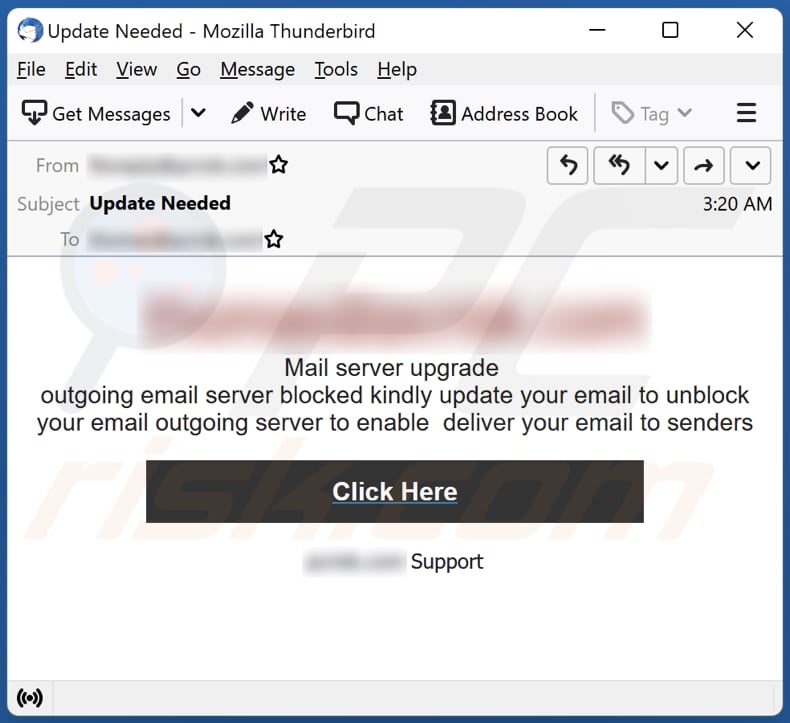
More about the "Mail Server Upgrade" scam email
This scam email claims that there is a need for an update on the email server. The outgoing email server has been blocked, and the recipients must update their email in order to unblock the outgoing server and ensure that their emails can be delivered to the intended recipients.
The letter has a hyperlink labeled "Click Here" which leads to a phishing page posing as a login page for email accounts. The page is designed to mimic the appearance of the login page based on the recipient's email provider. For example, if the recipient uses Gmail, the link opens a fake Gmail login site.
This phishing attempt aims to deceive recipients into giving their email account login information. Scammers may use this information to not only access email accounts, but also other accounts as people often use the same login information for multiple accounts.
| Name | Mail Server Upgrade Email Scam |
| Threat Type | Phishing, Scam, Social Engineering, Fraud |
| Fake Claim | Email address/account must be updated |
| Disguise | Letter from an email service provider |
| Symptoms | Unauthorized online purchases, changed online account passwords, identity theft, illegal access of the computer. |
| Distribution methods | Deceptive emails, rogue online pop-up ads, search engine poisoning techniques, misspelled domains. |
| Damage | Loss of sensitive private information, monetary loss, identity theft. |
| Malware Removal (Windows) |
To eliminate possible malware infections, scan your computer with legitimate antivirus software. Our security researchers recommend using Combo Cleaner. Download Combo CleanerTo use full-featured product, you have to purchase a license for Combo Cleaner. 7 days free trial available. Combo Cleaner is owned and operated by RCS LT, the parent company of PCRisk.com. |
Similar scam emails in general
Phishing emails are often disguised as official, urgent, or important letters from real people, companies, organizations, or other entities. Their purpose is to trick recipients into giving sensitive information like ID card information, credit card details, login information, etc.
Some examples of phishing emails include "Mailbox Full", "UPS Custom Permit", and "Paid/Unpaid Invoice". Emails can also be used to distribute malware.
How do spam campaigns infect computers?
Emails used for delivering malware contain malicious links or attachments. Recipients infect their computers when they download and execute malware by themselves (e.g., enable macros commands in malicious documents or open malicious executables).
Threat actors often use malicious MS Office documents, PDF files, JavaScript files, executables, ISO files, archives with malicious files, and other file types to spread malware.
How to avoid installation of malware?
Before opening any links or attachments in an email, it is important to carefully review the email. Be wary of emails from unknown addresses or those that seem irrelevant or unexpected. Also, download software and files from official websites or app stores. Avoid downloading from sources such as P2P networks, free file hosting sites, suspicious websites, etc.
Do not trust ads and links on unreliable websites. Always keep the operating system and installed software up to date, and use a reputable antivirus program. If you've already opened malicious attachments, we recommend running a scan with Combo Cleaner Antivirus for Windows to automatically eliminate infiltrated malware.
Text presented in the "Mail Server Upgrade" email letter:
Subject: Update Needed
-
Mail server upgrade
outgoing email server blocked kindly update your email to unblock your email outgoing server to enable deliver your email to senders
Click Here
- Support
Phishing website promoted via this scam email:
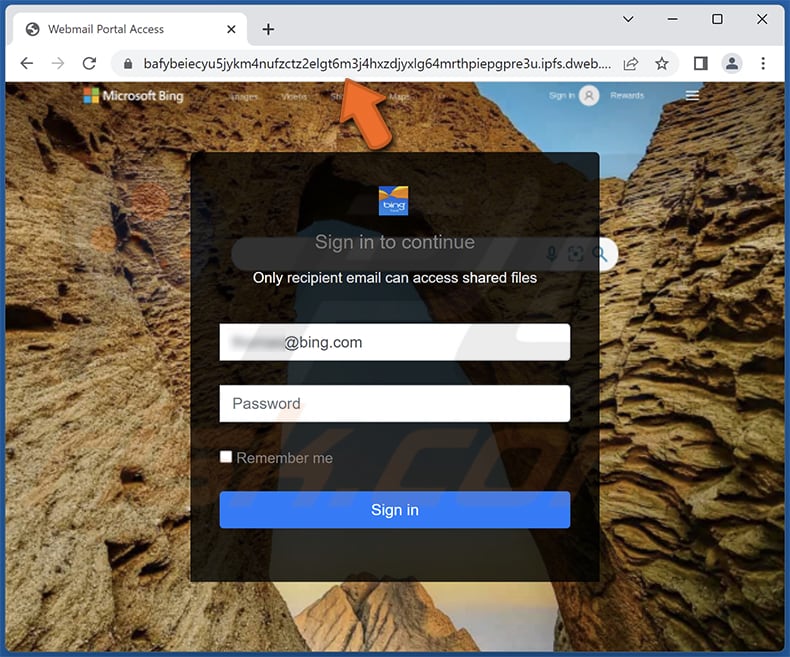
Another example of mail server upgrade-themed spam email promoting an identical phishing site:
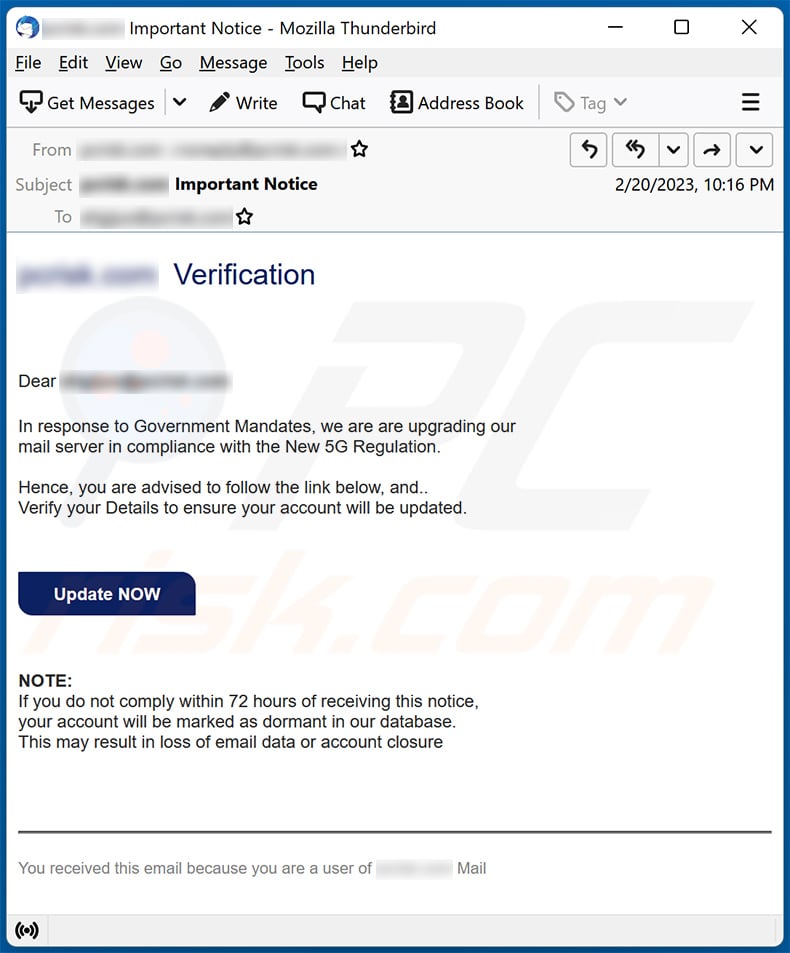
Text presented within:
Subject: ******** Important Notice
******** Verification
Dear ********
In response to Government Mandates, we are are upgrading our
mail server in compliance with the New 5G Regulation.Hence, you are advised to follow the link below, and..
Verify your Details to ensure your account will be updated.Update NOW
NOTE:
If you do not comply within 72 hours of receiving this notice,
your account will be marked as dormant in our database.
This may result in loss of email data or account closureYou received this email because you are a user of ******** Mail
Another example of an email from "Mail Server Upgrade" spam campaign:
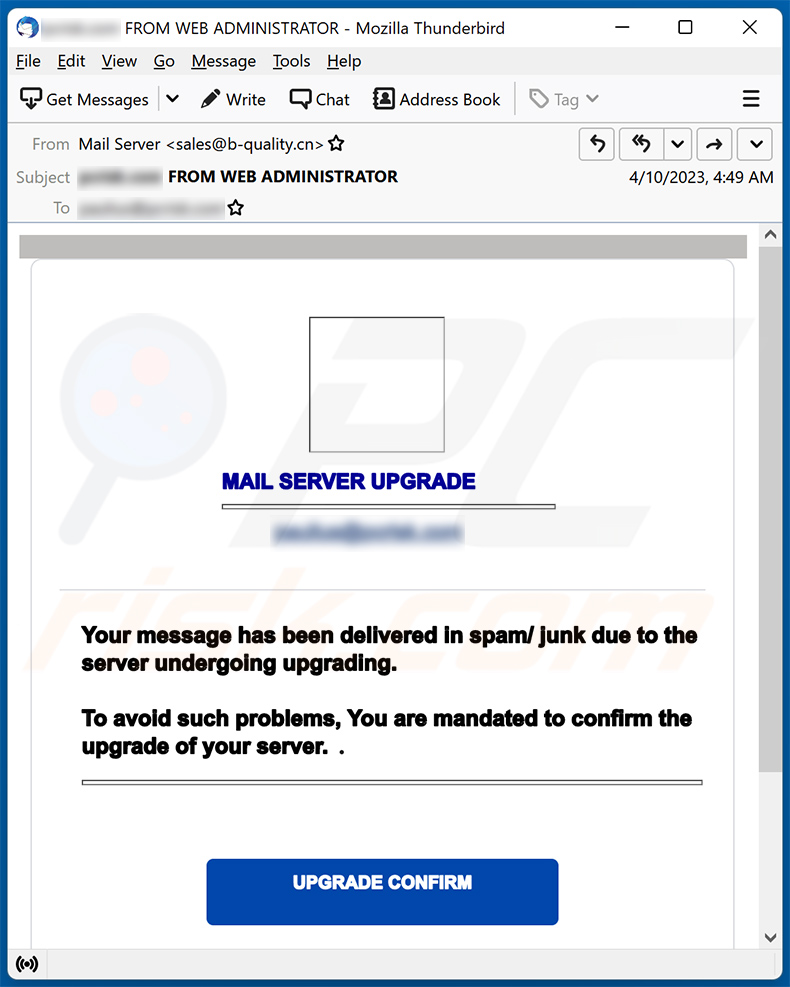
Text presented within:
Subject: - FROM WEB ADMINISTRATOR
MAIL SERVER UPGRADE -
Your message has been delivered in spam/ junk due to the server undergoing upgrading.To avoid such problems, You are mandated to confirm the upgrade of your server. .
UPGRADE CONFIRM
You received this email to let you know about important changes to your email account and services.
© 2023 Agroup-Int
This is an automated server message. Do not reply.
Screenshot of the promoted phishing site:
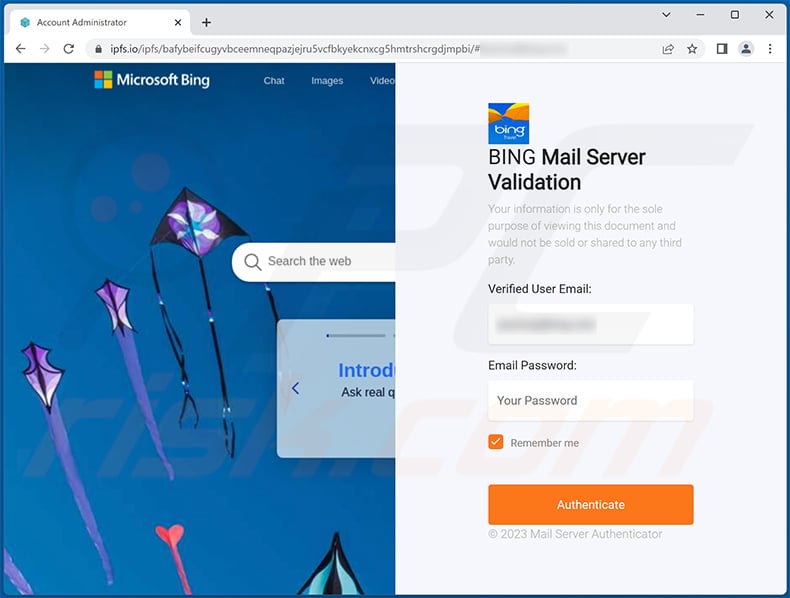
Another example of mail server upgrade-themed spam promoting a phishing site:
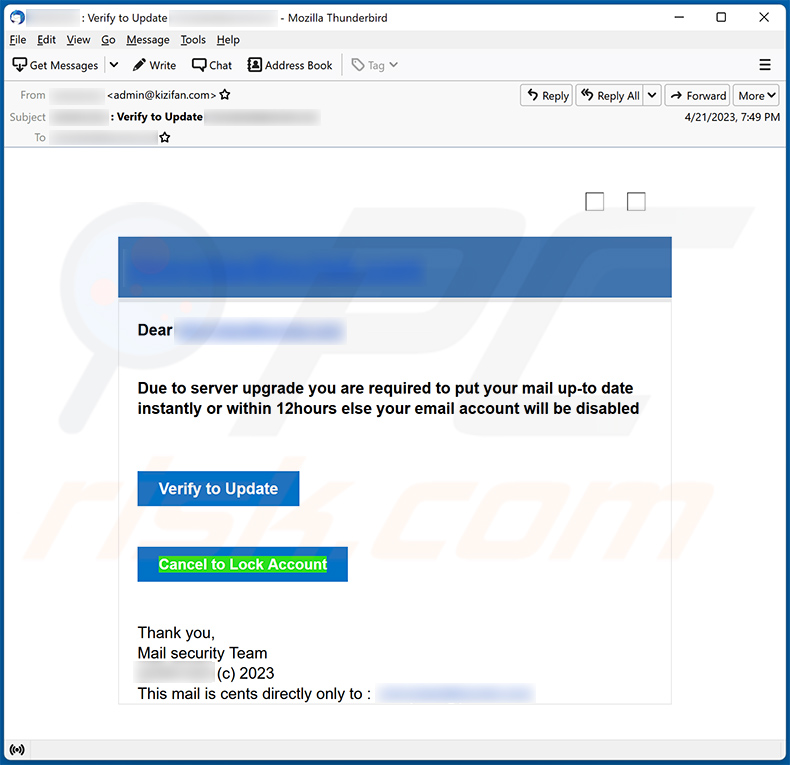
Text presented within:
Subject: ******** : Verify to Update ********
Dear ********
Due to server upgrade you are required to put your mail up-to date instantly or within 12hours else your email account will be disabled
Verify to Update
Cancel to Lock Account
Thank you,
Mail security Team
******** (c) 2023
This mail is cents directly only to : ********
Yet another example of an email from "Mail Server Upgrade" spam campaign:
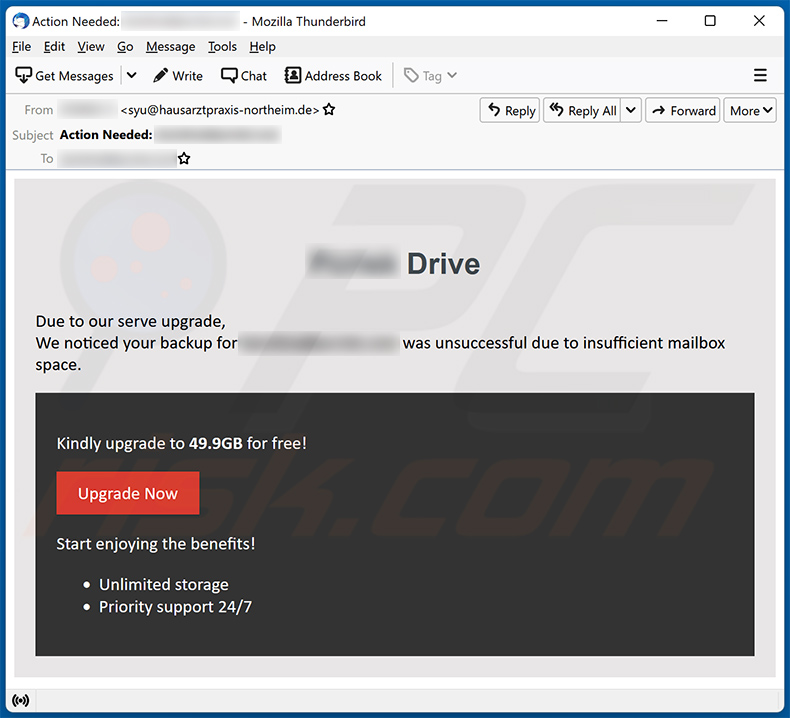
Text presented within:
Subject: Асtiоn Nееdеd: -
- DriveDue to our serve upgrade,
We noticed your backup for - was unsuccessful due to insufficient mailbox space.Kindly upgrade to 49.9GB for free!
Upgrade NowStart enjoying the benefits!
Unlimited storage
Priority support 24/7
Another example of mail upgrade-themed spam promoting a phishing site:
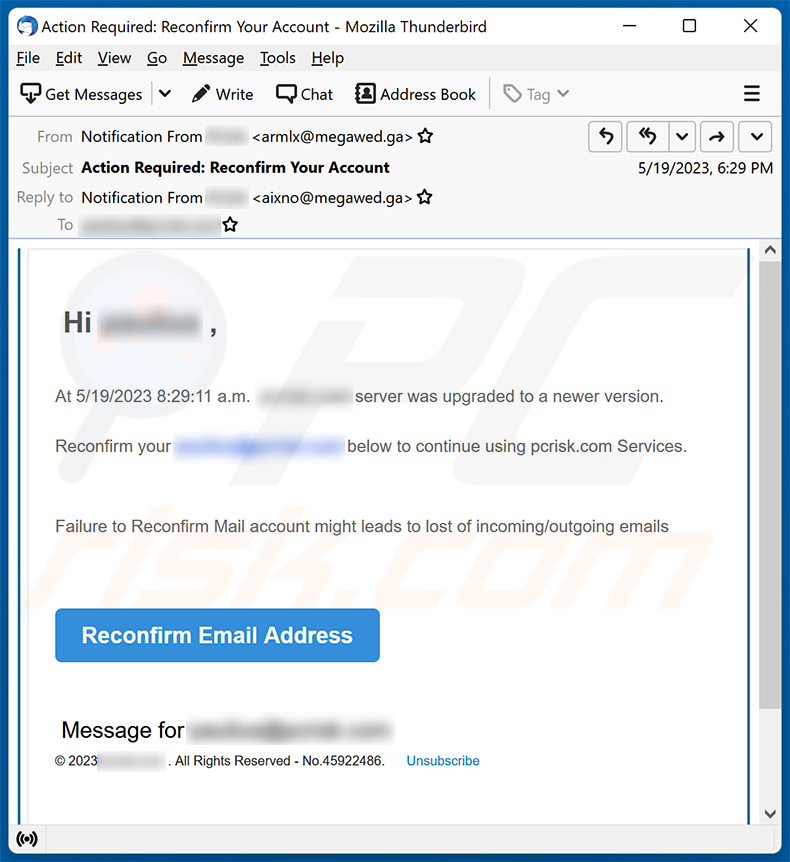
Text presented within:
Subject: Action Required: Reconfirm Your Account
Hi ******** ,
At 5/19/2023 8:29:11 a.m. ******** server was upgraded to a newer version.
Reconfirm your ******** below to continue using ******** Services.
Failure to Reconfirm Mail account might leads to lost of incoming/outgoing emails
Reconfirm Email Address
Message for ********
© 2023 ******** . All Rights Reserved - No.45922486. Unsubscribe
Instant automatic malware removal:
Manual threat removal might be a lengthy and complicated process that requires advanced IT skills. Combo Cleaner is a professional automatic malware removal tool that is recommended to get rid of malware. Download it by clicking the button below:
DOWNLOAD Combo CleanerBy downloading any software listed on this website you agree to our Privacy Policy and Terms of Use. To use full-featured product, you have to purchase a license for Combo Cleaner. 7 days free trial available. Combo Cleaner is owned and operated by RCS LT, the parent company of PCRisk.com.
Quick menu:
- What is Mail Server Upgrade phishing scam?
- Types of malicious emails.
- How to spot a malicious email?
- What to do if you fell for an email scam?
Types of malicious emails:
![]() Phishing Emails
Phishing Emails
Most commonly, cybercriminals use deceptive emails to trick Internet users into giving away their sensitive private information, for example, login information for various online services, email accounts, or online banking information.
Such attacks are called phishing. In a phishing attack, cybercriminals usually send an email message with some popular service logo (for example, Microsoft, DHL, Amazon, Netflix), create urgency (wrong shipping address, expired password, etc.), and place a link which they hope their potential victims will click on.
After clicking the link presented in such email message, victims are redirected to a fake website that looks identical or extremely similar to the original one. Victims are then asked to enter their password, credit card details, or some other information that gets stolen by cybercriminals.
![]() Emails with Malicious Attachments
Emails with Malicious Attachments
Another popular attack vector is email spam with malicious attachments that infect users' computers with malware. Malicious attachments usually carry trojans that are capable of stealing passwords, banking information, and other sensitive information.
In such attacks, cybercriminals' main goal is to trick their potential victims into opening an infected email attachment. To achieve this goal, email messages usually talk about recently received invoices, faxes, or voice messages.
If a potential victim falls for the lure and opens the attachment, their computers get infected, and cybercriminals can collect a lot of sensitive information.
While it's a more complicated method to steal personal information (spam filters and antivirus programs usually detect such attempts), if successful, cybercriminals can get a much wider array of data and can collect information for a long period of time.
![]() Sextortion Emails
Sextortion Emails
This is a type of phishing. In this case, users receive an email claiming that a cybercriminal could access the webcam of the potential victim and has a video recording of one's masturbation.
To get rid of the video, victims are asked to pay a ransom (usually using Bitcoin or another cryptocurrency). Nevertheless, all of these claims are false - users who receive such emails should ignore and delete them.
How to spot a malicious email?
While cyber criminals try to make their lure emails look trustworthy, here are some things that you should look for when trying to spot a phishing email:
- Check the sender's ("from") email address: Hover your mouse over the "from" address and check if it's legitimate. For example, if you received an email from Microsoft, be sure to check if the email address is @microsoft.com and not something suspicious like @m1crosoft.com, @microsfot.com, @account-security-noreply.com, etc.
- Check for generic greetings: If the greeting in the email is "Dear user", "Dear @youremail.com", "Dear valued customer", this should raise suspiciousness. Most commonly, companies call you by your name. Lack of this information could signal a phishing attempt.
- Check the links in the email: Hover your mouse over the link presented in the email, if the link that appears seems suspicious, don't click it. For example, if you received an email from Microsoft and the link in the email shows that it will go to firebasestorage.googleapis.com/v0... you shouldn't trust it. It's best not to click any links in the emails but to visit the company website that sent you the email in the first place.
- Don't blindly trust email attachments: Most commonly, legitimate companies will ask you to log in to their website and to view any documents there; if you received an email with an attachment, it's a good idea to scan it with an antivirus application. Infected email attachments are a common attack vector used by cybercriminals.
To minimise the risk of opening phishing and malicious emails we recommend using Combo Cleaner Antivirus for Windows.
Example of a spam email:

What to do if you fell for an email scam?
- If you clicked on a link in a phishing email and entered your password - be sure to change your password as soon as possible. Usually, cybercriminals collect stolen credentials and then sell them to other groups that use them for malicious purposes. If you change your password in a timely manner, there's a chance that criminals won't have enough time to do any damage.
- If you entered your credit card information - contact your bank as soon as possible and explain the situation. There's a good chance that you will need to cancel your compromised credit card and get a new one.
- If you see any signs of identity theft - you should immediately contact the Federal Trade Commission. This institution will collect information about your situation and create a personal recovery plan.
- If you opened a malicious attachment - your computer is probably infected, you should scan it with a reputable antivirus application. For this purpose, we recommend using Combo Cleaner Antivirus for Windows.
- Help other Internet users - report phishing emails to Anti-Phishing Working Group, FBI’s Internet Crime Complaint Center, National Fraud Information Center and U.S. Department of Justice.
Frequently Asked Questions (FAQ)
Why did I receive this email?
It is important to note that this letter was not sent to just one person but was likely sent to multiple (tens or even hundreds) individuals. Such letters are not personalized.
I have provided my personal information when tricked by this email, what should I do?
If you have provided login information on a fraudulent page, it is strongly recommended to change your passwords as soon as possible.
I have downloaded and opened a malicious file attached to an email, is my computer infected?
If you have downloaded and opened a malicious file from an email, it is possible that your computer has been infected with malware. Especially if that file was executable. To be sure, you should scan your computer with a reputable antivirus program.
I have read the email but did not open the attachment, is my computer infected?
Simply opening an email does not cause any harm to a computer. The risk of infection occurs when recipients click on links within the email or open attachments, as these actions may download or execute malicious code on a computer.
Will Combo Cleaner remove malware infections that were present in email attachment?
Yes, Combo Cleaner is equipped to detect and remove a wide range of known malware infections. However, it is worth noting that advanced malware can be difficult to detect as it often hides deep within the system. In such cases, it is important to run a full system scan.
Share:

Tomas Meskauskas
Expert security researcher, professional malware analyst
I am passionate about computer security and technology. I have an experience of over 10 years working in various companies related to computer technical issue solving and Internet security. I have been working as an author and editor for pcrisk.com since 2010. Follow me on Twitter and LinkedIn to stay informed about the latest online security threats.
PCrisk security portal is brought by a company RCS LT.
Joined forces of security researchers help educate computer users about the latest online security threats. More information about the company RCS LT.
Our malware removal guides are free. However, if you want to support us you can send us a donation.
DonatePCrisk security portal is brought by a company RCS LT.
Joined forces of security researchers help educate computer users about the latest online security threats. More information about the company RCS LT.
Our malware removal guides are free. However, if you want to support us you can send us a donation.
Donate
▼ Show Discussion